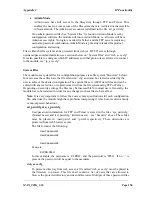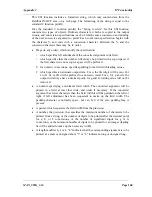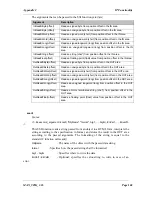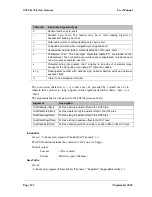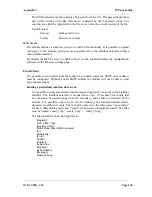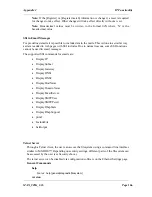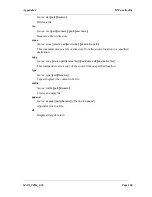
Appendix 2
IT Functionlity
MAN_905G_1.16
Page 154
•
Admin Mode
Admin users have full access to the filesystem through FTP and Telnet. This
enables the user to access areas of the filesystem that are restricted or inaccessible
in Normal mode. The Admin user accounts are defined in the file ‘ad_pswd.cfg’.
If no admin password file (See “System Files”) is found or Admin Mode is set by
configuration software, the module will run in Admin Mode; i.e. all users will have
Admin access rights. No login is needed for Telnet, and the FTP server accepts any
username/password combination. Admin Mode is primarily intended for product
configuration and testing.
Files within the file system can be protected from web (i.e. HTTP) access through
username/password authorization, see sections below on “System Files” and “web_accs.cfg”.
It is also possible to configure which IP addresses and what protocols are allowed to connect
to the module, see “ip_accs.cfg”.
System Files
The module uses system files for configuration purposes (see file system “Structure” below).
In most cases these files have the file extension ‘.cfg’ and must be created or edited by the
user to achieve the desired configuration. The system files are ASCII (text) files and can be
edited with any text editor, or copied/moved to/from the file system using FTP or Telnet.
Depending on security settings, the files may be inaccessible for normal users. Generally, the
module has to be restarted in order for any changes in these files to have effect.
Note:
It is very important to follow the exact syntax specifications for each configuration
file, otherwise the module might have problems interpreting it, which can result in a faulty
or non-expected behaviour.
ad_pswd.cfg & sys_pswd.cfg
User/password information for FTP and Telnet is stored in the files ‘sys_pswd.cfg’
(Normal users) and ‘ad_pswd.cfg’ (Admin users) – see “Security” above. These files
must be placed in ‘\user\pswd’ and ‘\pswd\ respectively. These directories are
protected from web browser access.
The file format is the following:
User1:password1
User2:password2
...
User3:password3
Example:
ELPRO:905G
In this example, the username is ‘ELPRO’, and the password is ‘905G’. If no ‘:’ is
present, the password will be equal to the username.
web_accs.cfg
To protect a directory from web access, a file called ‘web_accs.cfg’ must be placed in
the directory to protect. This file shall contain a list of users that are allowed to
browse the protected directory and its subdirectories. Multiple of these password files















